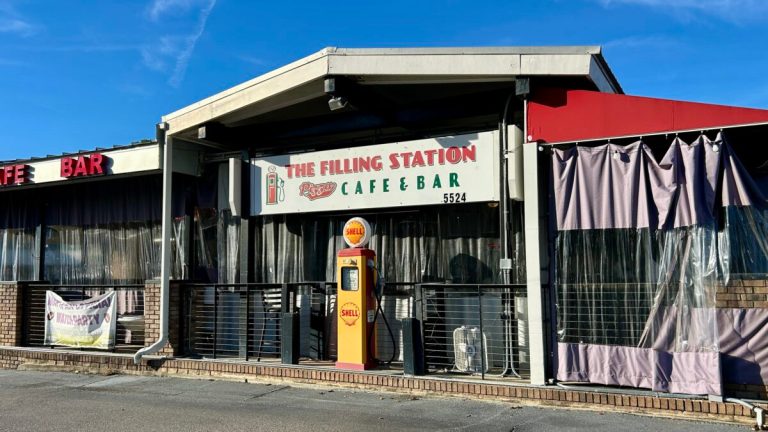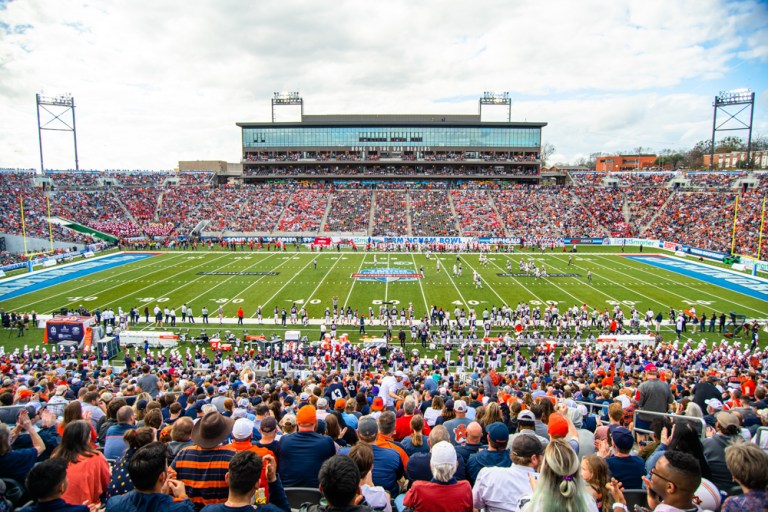This robotics program uses innovative tech to help children with physical impairments—see positive results
Reading time: 6 minutes
Sponsored

The Robotics and Mobility Program (RAMP) at Children’s of Alabama is opening the door to more opportunities for rehabilitation with physical therapy and occupational therapy. Learn from several team members at Children’s about the innovative technology and how it’s helping children and teens with physical impairments grow stronger and lead more independent lives.
RAMP uses technology in new ways

From a robotic device that functions like a video game to an exoskeleton affectionately named Tony after Iron Man, RAMP uses technology to help patients gain back motor performance skills.
The unique opportunities this equipment provides are changing the way children receive care. The ability to store data so specialists can look back and see what works and have a way to measure progress is revolutionary.
“We’ve got several different pieces of equipment. They’re all computerized and all have measurement assessments on them. Every time a patient is seen or has a treatment intervention, we capture a lot of the data. It shows progress and measures those skills so that we can assist them with their treatment goals or their plan of care.”
Karen McCormack, Occupational Therapist, Children’s of Alabama
In addition to having the ability to track a patient’s progress, the equipment itself is user-friendly for children. Much of it works the same way a video game would—making therapy a little more fun and familiar.
“Part of what makes (RAMP) so unique and cool for our patients is that a lot of the technology incorporates gaming. Every kid likes to game, and every kid wants to score more points and go to the next level. So, there are some built-in motivational factors and achievement factors as well.
There is objective data where you can say, ‘They were this accurate,’ ‘Their response time was this’ or ‘This is how much they varied off from what would be normal from their last performance.'”
Rhett Wheeler, Director of Physical Therapy and Occupational Therapy, Children’s of Alabama
Opening the door to better healing

Using the technology, the staff at Children’s of Alabama have seen children with severe injuries gain more mobility.
Whether it’s an accomplishment like having a patient reach overhead or get more range of motion so they’re able to put clothes on without assistance, each feat is incredible to witness.
“It’s been interesting to see a child who, maybe through deconditioning or radiation, is very weak, and to see them get up and moving. It’s amazing to see them walking on their own with an exoskeleton around them, supporting them. Those experiences live with you.”
Karen McCormack, Occupational Therapist, Children’s of Alabama
More about the equipment and who is using it

The exoskeleton might be one of the most interesting pieces of equipment. It’s a beneficial tool for patients who no longer have good signals to their muscles—including those with cerebral palsy, a spinal cord injury or traumatic brain injury.
The Bioness Vector is another piece of technology RAMP uses to aid with balance, gait and posture.
“The Bioness Vector helps to unweight people. We can do a lot of early standing with patients after they’ve had some orthopedic surgery. Or, after they’ve had injuries where they’re not able to put the full amount of weight through their legs.”
Corinne Chapman, Physical Therapist, Children’s of Alabama
Who benefits from RAMP?

The program is beneficial for children, whose physical goals are frequently changing as they are developing. RAMP allows them to come back and benefit from the therapy based on what they’d like to achieve.
For example, there could be a new situation where the child moved from elementary to middle school and now they need to learn how to change classes efficiently and walk between classes with a backpack.
“We don’t usually see a child weekly for their whole life. There are periods of time when we see them more frequently and other times they do not need outpatient rehab. But they come back to see us at times when they have some goals that they want to work toward.”
Corinne Chapman, Physical Therapist, Children’s of Alabama
Like Corinne mentioned, patients using RAMP aren’t always immediately following surgery. The program has also provided additional options for those who didn’t reach their goals with traditional therapy.
“Sometimes people feel like they’ve exhausted their resources through traditional therapies…That’s been a situation where we’ve seen some kids who maybe are much further out from diagnosis or injury, more so than the acute kids that were running through the program.”
Rhett Wheeler, Director of Physical Therapy and Occupational Therapy, Children’s of Alabama
Children’s expert staff + the tech tools RAMP provides help kids succeed

There’s a reason Children’s of Alabama is consistently recognized as one of the top healthcare facilities in the nation. Part of it has to do with incredible resources like RAMP, which would not have been possible without the generous support of the hospital’s community partners and donors. The other is the amazing staff who know how to set patients up for success.
“It’s great to have the technology, but we’re only as good as the people using it. We’ve got a highly experienced staff that is very patient-centered and patient-focused. They utilize the technology as kind of an adjunct.
It is one component of what we’re doing to help our patients get better. RAMP is just another tool in our arsenal that enables our therapists to do what they need to do to help kids.”
Rhett Wheeler, Director of Physical Therapy and Occupational Therapy, Children’s of Alabama
Since its inception four years ago, RAMP has continued to grow. From helping patients feed themselves to getting them back on their feet, RAMP is a learning process that keeps getting better for everyone involved.
“To me, our program is always ongoing. It’s always being creative and trying to meet the needs of our patients and our families here and through our community resources. I’m grateful for seeing how our community has responded. It’s a great overall program that we can see so many good things coming from in all directions together.”
Karen McCormack, Occupational Therapist, Children’s of Alabama




